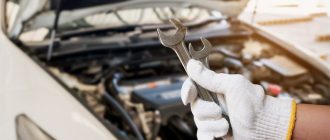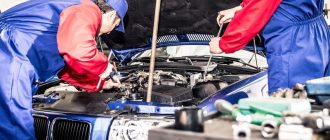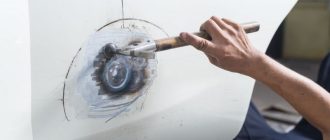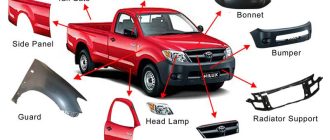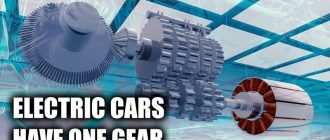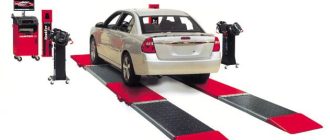
Fixing Front-End Damage After a Car Collision
After a car collision, it is not uncommon for the front-end of the vehicle to sustain significant damage. However, fixing the front-end damage is crucial to ensure the car’s safety and performance. Whether it’s a minor fender bender or a major collision, addressing the front-end damage promptly is essential for getting your car back on the road safely.
One of the first steps in fixing front-end damage after a collision is to assess the extent of the damage. This can be done by a professional mechanic or a body shop technician. They will carefully inspect the front end of the car, including the bumper, grille, headlights, and other affected components.
Repairing the front-end damage may involve the following steps:
- Replacing damaged parts: In many cases, the front-end damage may require the replacement of certain components, such as the bumper or headlights. These parts can be ordered from an authorized dealer or purchased from a reputable auto parts store.
- Straightening the frame: If the collision has caused the frame to become misaligned, a process known as frame straightening will be necessary. This involves using specialized equipment to bend the frame back into its original shape.
- Painting and refinishing: After replacing or repairing the damaged parts, the front-end of the car will need to be painted to match the rest of the vehicle. This ensures a seamless and professional-looking finish. The painting process includes sanding, priming, and applying multiple layers of color and clear coat.
- Testing and alignment: Once all the repairs are completed, the car needs to undergo thorough testing to ensure everything is functioning properly. This includes checking the alignment of the wheels and suspension, testing the lights and signals, and conducting a test drive to verify the car’s overall performance.
Fixing front-end damage after a car collision can be a complex process that requires expertise and specialized tools. Therefore, it is recommended to seek professional help from an experienced mechanic or a reputable body shop. They have the necessary skills and equipment to effectively repair the front-end damage and restore your car to its pre-collision condition.
Remember, addressing front-end damage promptly is crucial for the safety and performance of your car. Don’t delay in getting the necessary repairs done to ensure your vehicle is roadworthy.
The Importance of Immediate Action
After a car collision, the front-end damage can be significant. It is crucial to take immediate action to fix the damage to ensure the safety and functionality of your car.
Why is immediate action necessary?
- Ensures safety: Front-end damage can compromise the structural integrity of your car, increasing the risk of further accidents. Immediate action helps prevent any potential harm to you and others on the road.
- Prevents additional damage: Delaying the repair of front-end damage can lead to further complications. Addressing the issue promptly can prevent more extensive damage, saving you time and money in the long run.
- Preserves the value of your car: Front-end damage can significantly impact the resale value of your car. By fixing it immediately, you can maintain the value and appeal of your vehicle.
What are the steps to take for fixing the front-end damage?
- Contact a trusted professional: Find a reputable auto repair shop that specializes in front-end damage repair. They will assess the extent of the damage and provide an accurate estimate.
- Get a detailed repair plan: The repair shop will create a detailed repair plan, outlining the necessary repairs and the timeline for completion.
- Work with your insurance company: If the collision was covered by insurance, inform your provider and work together to ensure a smooth claims process.
- Follow the repair process: Monitor the repair progress and ask for updates. It is essential to stay informed and address any concerns or questions during the process.
- Ensure quality control: Once the repairs are done, thoroughly inspect the work to ensure everything is fixed correctly. Test drive your car to check for any potential issues.
Conclusion
Fixing front-end damage after a car collision requires immediate action to guarantee safety, prevent further damage, and maintain the value of your car. By following the steps mentioned above, you can get your car back in excellent condition and ensure a smooth and hassle-free repair process.
Assessing the Damage
If you have been involved in a collision, it is crucial to assess the front-end damage to your vehicle. Not only can front-end damage impact the overall aesthetics of your car, but it can also affect its performance and safety. By properly assessing the damage, you can determine the necessary steps for fixing it and ensuring your vehicle is back in its optimal condition.
Here are some key points to consider when assessing front-end damage after a collision:
- Note the visible damage: Make a note of any visible damage to the front-end of your car, such as dents, scratches, or misaligned parts.
- Inspect the headlights and taillights: Check if the headlights and taillights are intact and functioning properly. Any cracks or malfunctions should be addressed.
- Check the radiator and cooling system: Look for any signs of leaks or damage to the radiator and cooling system. These components are vital for the engine’s performance and should be examined by a professional.
- Examine the grille and bumper: Assess the condition of the grille and bumper, as they are often the first parts to be impacted in a front-end collision. Any cracks or structural issues should be addressed.
- Test the alignment: Ensure that the wheels and suspension are properly aligned. Misalignment can result in uneven tire wear and affect the vehicle’s handling and safety.
Once you have thoroughly assessed the front-end damage, it is recommended to consult a professional mechanic or body shop to get an accurate evaluation of the repairs needed. They will guide you through the process of fixing the damage and provide you with a detailed estimate of the costs involved.
Remember, promptly addressing front-end damage after a collision is essential to maintain the safety, performance, and overall appearance of your vehicle.
Choosing the Right Repair Shop
When it comes to fixing front-end damage after a car collision, choosing the right repair shop is crucial. You want to ensure that your vehicle is in good hands and that the repair work will be done properly. Here are a few key factors to consider when selecting a repair shop:
- Experience: Look for a repair shop that has extensive experience in dealing with front-end damage. Check their track record and see if they specialize in collision repairs.
- Reputation: Do your research and read reviews from previous customers. Look for repair shops that have a reputation for providing high-quality service and customer satisfaction.
- Certifications: Check if the repair shop has certifications from recognized organizations, such as the National Institute for Automotive Service Excellence (ASE). Certifications indicate that the technicians have undergone proper training and are qualified to work on your vehicle.
- Insurance Coverage: Find out if the repair shop works with your insurance company. It is important to ensure a smooth claims process and avoid any out-of-pocket expenses.
- Warranty: Inquire about the warranty offered by the repair shop. A reputable shop should provide a warranty for their work to give you peace of mind.
By considering these factors, you can make an informed decision when choosing a repair shop to fix the front-end damage after a car collision. Remember, taking the time to find a reliable and experienced repair shop can save you from future headaches and ensure that your vehicle is restored to its pre-accident condition.
Understanding the Repair Process
After a front-end collision, your car may suffer significant damage. It is essential to understand the repair process to ensure that your vehicle is restored to its pre-accident condition.
1. Assessment:
- The first step is to assess the damage to your car’s front-end.
- A qualified technician will inspect the vehicle and create a detailed estimate.
- This estimate will include the necessary repairs, parts, and labor required.
2. Disassembly:
- The damaged areas of your car will be disassembled to evaluate any hidden damage.
- This step ensures that all necessary repairs are accounted for and further damage is not overlooked.
3. Structural Repair:
- If the front-end damage has affected the structural integrity of your vehicle, it will require structural repair.
- A frame machine will be used to carefully align and straighten any bent or twisted components.
- This step ensures that your car is safe to drive and meets the manufacturer’s specifications.
4. Body Repair:
- The damaged body panels will be repaired or replaced.
- This includes removing dents, restoring the shape, and ensuring proper fitment.
- The damaged paint will also be addressed to match the original color of your car.
5. Mechanical Repair:
- If any mechanical components were damaged in the collision, they will be repaired or replaced.
- This includes suspension components, engine parts, and electrical systems.
- All repairs will be done to ensure the car’s proper functioning and performance.
6. Final Inspection:
- Once all repairs are complete, a final inspection will be conducted to ensure the car’s quality and safety.
- Your car will be thoroughly examined to verify that all repairs have been done correctly.
- Any necessary adjustments will be made, and the vehicle will be cleaned and prepared for pickup.
In conclusion, understanding the repair process for front-end damage after a car collision is crucial. It allows you to have confidence in the repairs performed and ensures the safety and reliability of your vehicle.
Replacing Damaged Parts
After a front-end car collision, it’s common to have damage to various parts of the vehicle. Whether it’s a cracked bumper, damaged headlights, or a bent fender, these parts need to be replaced to restore the car’s appearance and functionality.
At our repair shop, we offer a wide range of replacement parts to fix the damage caused by a collision. Our team of skilled technicians will carefully assess which parts need to be replaced and ensure they are sourced from reputable suppliers.
We understand how important it is to use high-quality parts that meet or exceed OEM specifications. That’s why we only use parts that are designed to fit your specific make and model of car, guaranteeing a proper fit and optimal performance.
Some of the common parts that may need to be replaced after a front-end collision include:
- Bumper: A damaged bumper may need to be removed and replaced with a new one to restore the car’s front-end appearance and protect other parts.
- Headlights: Cracked or broken headlights not only look unsightly but also compromise visibility. Replacing them is essential for safe nighttime driving.
- Fender: A bent or dented fender not only affects the car’s aesthetics but can also impact its performance and fuel efficiency. Replacing it ensures proper aerodynamics and reduces drag.
In addition to these major parts, there may be other components that need to be replaced, such as grilles, radiators, and cooling fans. Our team will thoroughly inspect your car and provide a detailed estimate for all necessary repairs and replacements.
When it comes to fixing front-end damage after a car collision, trust our experienced team to efficiently replace the damaged parts and restore your car to its pre-collision condition.
The Role of Paint and Bodywork
After a car collision, fixing the damage is a top priority. One essential aspect of the repair process is paint and bodywork. This crucial step involves restoring the appearance and structural integrity of the vehicle.
Painting:
The collision can leave unsightly scratches, dents, or chipped paint on the car’s surface. The paintwork not only enhances the vehicle’s aesthetics but also protects it from rust and corrosion. By applying a fresh coat of paint and meticulously matching the color, the car’s exterior can be restored to its original condition.
Bodywork:
The impact of a collision can cause significant damage to a car’s body. Structural components may be bent, panels can be misaligned, or sections could even be torn. Skilled technicians use advanced techniques and tools to repair these issues. This process involves reshaping, realigning, or replacing damaged parts, ensuring the vehicle’s overall structural integrity is restored.
Advantages of Professional Paint and Bodywork:
- Expertise: Professional technicians have the knowledge and experience to assess the damage accurately and determine the best approach for repair.
- Quality Materials: Professional paint and bodywork shops use high-quality paints, primers, and fillers to ensure a seamless and durable finish.
- Time Efficiency: With the right equipment and expertise, professionals can complete the paint and bodywork process efficiently, minimizing the time your car spends in the repair shop.
- Insurance Compliance: Most insurance companies require repairs to be done by authorized professionals. Choosing a professional shop ensures your repairs meet all necessary compliance standards.
In conclusion, paint and bodywork are essential steps in fixing front-end damage after a car collision. These processes not only restore the appearance of the vehicle but also ensure its structural integrity. By choosing a professional repair shop, you can trust that your car will receive high-quality repairs and be back on the road in no time.
Dealing with Structural Damage
When it comes to fixing the damage to your car after a front-end collision, dealing with structural damage can be a complex task. Structural damage refers to any damage that affects the frame or body of the car, which is responsible for providing support and stability.
Why is it important to address structural damage?
- Structural damage can compromise the safety of your vehicle. Even minor damage can weaken the overall structure and increase the risk of further damage in the event of another collision.
- Failure to address structural damage can also affect the car’s performance, making it harder to handle and reducing its overall lifespan.
- Structural damage can also impact the car’s resale value. Buyers are often hesitant to purchase a vehicle with known structural damage, as it can indicate more extensive issues.
How is structural damage repaired?
Repairing structural damage requires the expertise of a professional auto body shop. Here is a general overview of the repair process:
- Inspection: A thorough inspection is conducted to assess the extent of the structural damage. This may involve measuring and assessing the alignment of various components.
- Straightening: If the frame is bent or misaligned, special equipment is used to carefully straighten it back into the proper position.
- Replacement: In some cases, damaged components may need to be replaced entirely. This can include parts of the frame, support structures, or body panels.
- Reinforcement: Reinforcement techniques, such as welding and bracing, may be used to strengthen weakened areas and ensure the structural integrity of the repaired car.
Choose a reputable auto body shop for structural repairs
When dealing with structural damage, it is crucial to choose an experienced and reputable auto body shop. Look for a shop that specializes in collision repairs and has certified technicians. They should have the necessary equipment and expertise to properly assess and repair any structural damage your car has sustained.
By addressing structural damage promptly and opting for professional repairs, you can ensure that your car maintains its safety, performance, and value for years to come.
The Importance of Proper Alignment
After a front-end collision, the damage to your car can be extensive. One of the most important aspects to consider when repairing the damage is the alignment of your vehicle. Proper alignment is crucial for the overall performance and safety of your car.
Why is alignment important?
1. Improved handling and control: When your car’s wheels are properly aligned, it allows for better handling and control, especially during turns and maneuvers.
2. Reduced tire wear: Misalignment can cause uneven wear on your tires, leading to premature tire replacement. Proper alignment ensures that the tires wear evenly, prolonging their lifespan.
3. Optimal fuel efficiency: Misalignment can also result in increased fuel consumption. When your wheels are aligned properly, it reduces rolling resistance, allowing for better fuel efficiency.
4. Enhanced safety: Proper alignment improves the overall safety of your vehicle. It ensures that your tires make proper contact with the road, providing better traction and stability, especially in wet or slippery conditions.
Signs that your alignment may be off:
- Uneven tire wear
- Pulling to one side while driving
- Steering wheel vibrations
- Off-center steering wheel
How can we help?

At our collision repair center, we specialize in fixing front-end damage after a car collision. Our experienced technicians use state-of-the-art equipment to ensure that your vehicle’s alignment is restored to its original specifications. We also offer comprehensive inspections to identify any underlying issues that may have resulted from the collision.
Don’t compromise your vehicle’s safety and performance. Trust our experts to provide you with quality repair services that will get you back on the road with peace of mind.
| Phone: xxx-xxx-xxxx |
| Email: [email protected] |
| Address: 123 Main Street, City, State |
Addressing Electrical Issues
After a car collision, there may be damage to the electrical components of your vehicle. It is important to address these issues promptly to ensure the safety and functionality of your car.
Signs of Electrical Damage
- Dashboard lights not functioning properly
- Problems with the car’s battery
- Inability to start the car
- Malfunctioning of the car’s audio system
- Inconsistent power supply to various car components
Fixing Electrical Damage
If you notice any of the above signs, it is recommended to take your car to a professional mechanic. They have the expertise to diagnose and fix electrical issues. Here are some steps they may take:
- Diagnostic testing: The mechanic will use specialized tools to identify the specific electrical issues in your car.
- Repair or replacement: Once the issue is identified, the mechanic will repair or replace the damaged electrical components.
- Wiring inspection: The mechanic will inspect the wiring in your car to ensure there are no hidden issues that may cause further problems.
- Testing and verification: After the repairs are done, the mechanic will test the car’s electrical system to ensure everything is functioning properly.
Preventing Future Electrical Damage
To prevent future electrical damage after a car collision, follow these tips:
- Regularly inspect your car’s electrical components, including the battery and wiring.
- Be cautious while driving and avoid collisions whenever possible.
- Follow manufacturer’s guidelines for maintenance and servicing.
- Consider installing additional safety features, such as surge protectors, to protect your car’s electrical system.
By addressing electrical issues promptly and taking preventive measures, you can ensure the long-term functionality and safety of your car after a collision.
Ensuring Safety and Functionality
If your car has sustained front-end damage after a collision, it is crucial to address it promptly to ensure the safety and functionality of your vehicle. With our expert team and advanced technology, we can restore your car to its pre-damaged condition.
Why choose us?
- Years of experience in repairing front-end damage
- Highly skilled technicians who specialize in car collision repairs
- State-of-the-art equipment and technology
- Thorough assessment of the damage and personalized repair plan
- Efficient and timely service
Our services include:
- Inspecting the extent of the damage
- Removing damaged parts and components
- Repairing or replacing damaged panels
- Aligning and adjusting the front-end structure
- Ensuring proper functioning of headlights, turn signals, and other front-end components
- Painting and color matching to seamlessly blend the repaired areas
- Quality assurance checks to ensure safety and functionality
At our facility, we prioritize the safety of our customers and their vehicles. We understand the importance of a properly functioning front-end, as it affects the overall performance and structural integrity of the car. By choosing our services, you can have peace of mind knowing that your car will be in the hands of experts who will restore it to its optimum condition.
| Phone: 123-456-7890 |
| Email: [email protected] |
The Cost of Repairs
After fixing front-end damage after a car collision, the cost of repairs can vary depending on the extent of the damage and the make and model of the vehicle. It is important to consult with a trusted mechanic or body shop to get an accurate estimate of the cost.
Factors that can affect the cost of repairs include:
- The severity of the damage
- The type of materials needed for repairs
- The labor required for the repairs
- The availability of parts
It is also important to consider any additional costs that may be associated with the repairs, such as towing fees or rental car expenses if the vehicle is not drivable.
When getting an estimate for front-end damage repairs, it is a good idea to compare prices and services from multiple repair shops. This can help ensure that you are getting a fair and competitive price for the repairs.
Remember, the cost of repairs after a collision is an investment in the safety and functionality of your vehicle. It is important to prioritize the necessary repairs to maintain the value and performance of your car.
Insurance Coverage and Claims
When it comes to fixing front-end damage to your car after a collision, your insurance coverage and claims are crucial. Understanding how your insurance works and how to file a claim can help ensure that the cost of repairing the damage is covered.
Here are some important things to know about insurance coverage and claims:
- Insurance Policies: Check your insurance policy to see what is covered in the event of a collision. Most policies will cover front-end damage, but it’s important to know the specifics.
- Deductible: You may be required to pay a deductible before your insurance coverage kicks in. Make sure you know the amount of your deductible and be prepared to pay it when filing a claim.
- Claim Process: Contact your insurance company as soon as possible after the collision to report the damage. They will guide you through the claim process and provide you with the necessary forms and information.
- Estimates: Your insurance company may require you to obtain multiple repair estimates. Be sure to follow their guidelines and choose a reputable repair shop.
- Repair Shop Options: Depending on your insurance policy, you may have the option to choose your own repair shop. Research different shops to find one that specializes in front-end damage repair.
- Communication: Stay in communication with your insurance company throughout the repair process. They may need additional information or documentation to process your claim.
- Payment: Once the repairs are complete, your insurance company will typically pay the repair shop directly. However, you may be responsible for paying your deductible and any additional costs not covered by your policy.
By understanding your insurance coverage and knowing how to navigate the claims process, you can ensure that your front-end car damage is fixed without incurring excessive out-of-pocket expenses.
Preventing Future Damage
Protect your car and avoid costly front-end damage by following these proactive steps:
- Drive defensively and avoid reckless behavior that could result in a collision.
- Maintain a safe following distance to give yourself ample time to react and avoid rear-ending another vehicle.
- Be aware of your surroundings and use your mirrors to spot potential hazards.
- Observe traffic rules and signals to reduce the risk of being involved in a collision.
- If you notice any issues with your car’s suspension or steering, have them inspected and repaired promptly to prevent front-end damage.
- Regularly check your tire pressure and tread wear to ensure proper traction and prevent accidents.
- Consider installing front-end protection measures such as bull bars or bumper guards to minimize the impact of a collision.
By taking these precautions, you can significantly decrease the likelihood of front-end damage to your car and the associated costs and inconveniences of fixing it afterwards.
Q&A:
What is front-end damage on a car?
Front-end damage on a car refers to any damage that occurs to the front section of the vehicle as a result of a collision or accident. This can include damage to the bumper, fenders, hood, grille, headlights, and other components in the front of the car.
Can front-end damage be repaired?
Yes, front-end damage can usually be repaired. The extent of the repair will depend on the severity of the damage and whether any components need to be replaced. Minor front-end damage such as a cracked bumper or scratched paint can often be repaired without replacing any parts, while more severe damage may require replacing damaged components.
How much does it cost to fix front-end damage on a car?
The cost of fixing front-end damage on a car can vary widely depending on the extent of the damage and the make and model of the vehicle. Minor damage may cost a few hundred dollars to repair, while more severe damage can cost several thousand dollars. It’s best to get an estimate from a reputable auto body shop to determine the exact cost.
How long does it take to fix front-end damage on a car?
The time it takes to fix front-end damage on a car can vary depending on the severity of the damage and the availability of replacement parts. Minor damage may be repaired within a few days, while more extensive damage could take several weeks or even longer. It’s best to consult with a professional auto body shop to get a more accurate estimate of the repair time.
Can I fix front-end damage on my own?
While it is possible to fix minor front-end damage on your own, it is generally recommended to leave more significant repairs to professionals. Repairing front-end damage requires specialized knowledge, tools, and equipment, and attempting to fix it yourself could potentially worsen the damage or compromise the safety of the vehicle. It’s best to consult with a reputable auto body shop for any front-end damage repairs.
What is front-end damage in a car collision?
Front-end damage in a car collision refers to the damage that occurs to the front part of a vehicle in a collision. This can include damage to the bumper, headlights, grille, and other components located at the front of the car.
Is it possible to fix front-end damage after a car collision?
Yes, it is possible to fix front-end damage after a car collision. However, the extent of the damage and the cost of repairs will depend on the severity of the collision and the specific parts that need to be replaced or repaired.
